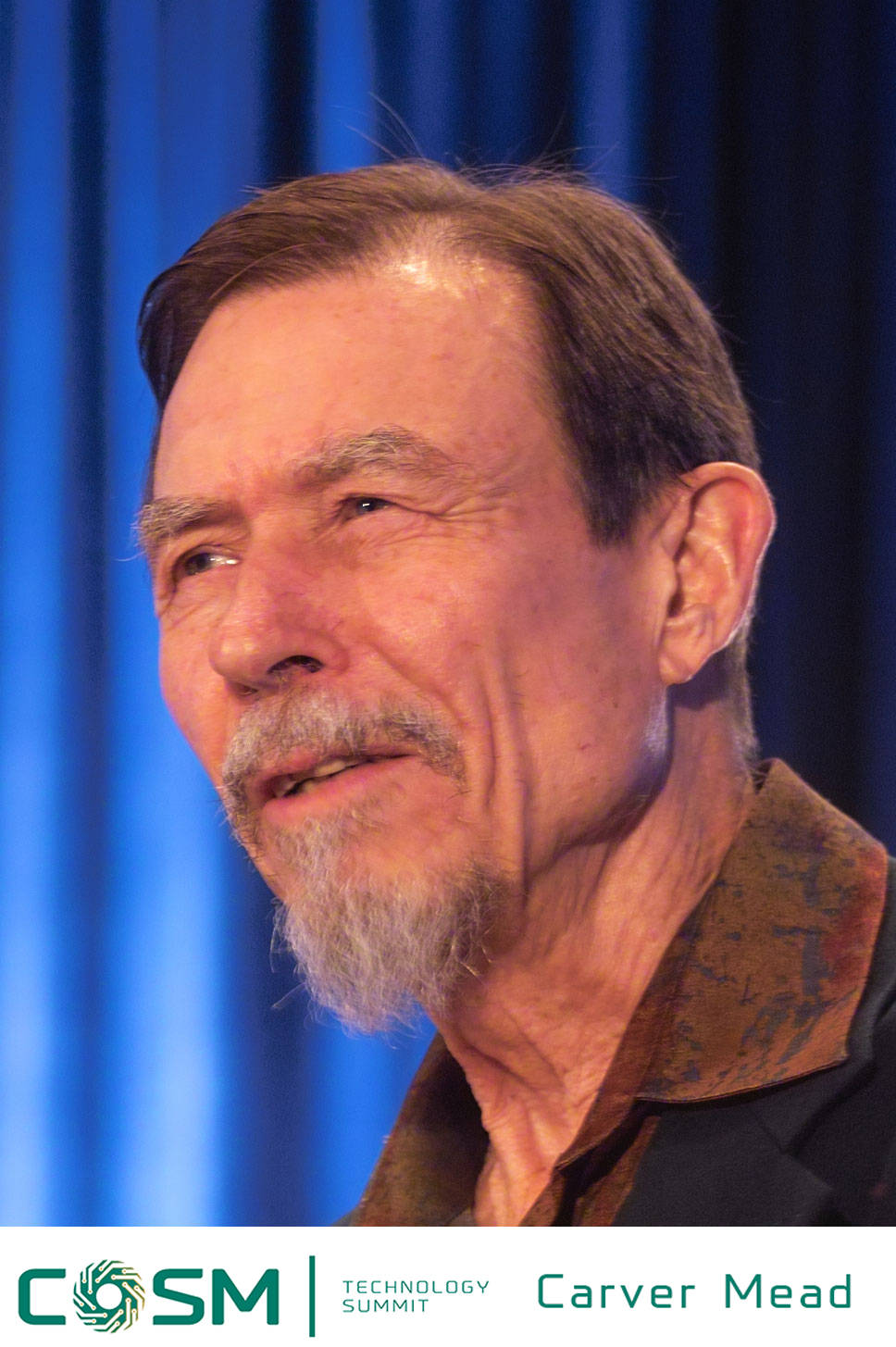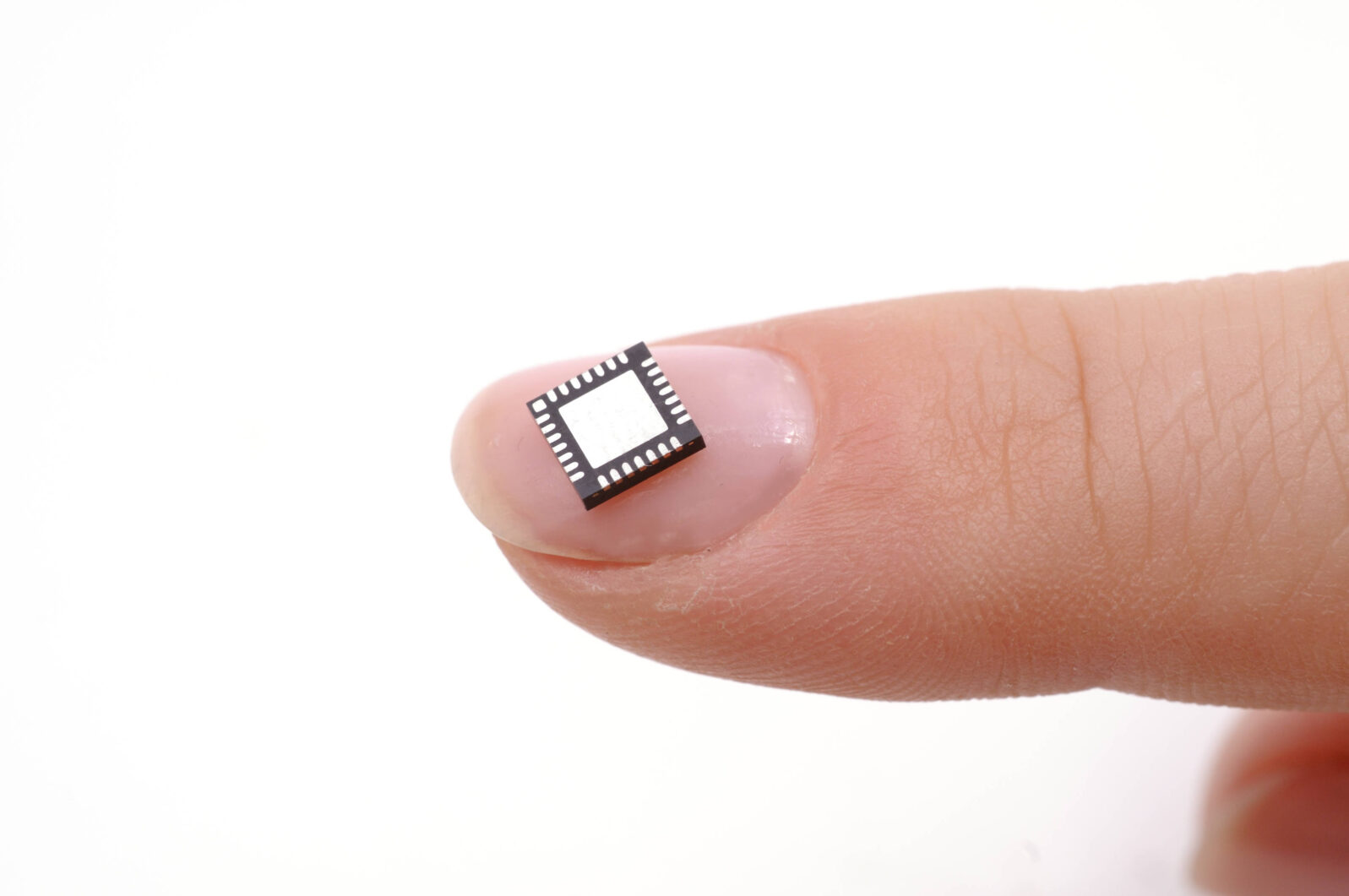Carver Mead Asks, Where Did AI Come From?
The microprocessor pioneer who was a colleague of Feynman and named Moore’s Law is certainly in a position to know
One of the speakers at the upcoming COSM Technology Summit (October 23–25, Bellevue, Washington) will be microelectronics pioneer Carver Mead (Thursday, October 24, 8:20 pm), who coined the term Moore’s Law. He asks, economically, “Whence AI?” It’s a question that he is far better prepared to answer than most people. In 2002, he received the National Medal of Technology for a number of “pioneering contributions to microelectronics,” which underlies cell phones and computer neural networks.
Time is running out to save $500 with the Early Adopters rate ($) which expires on Friday (October 11) at midnight. Join George Gilder and some of the world’s leading tech minds in Seattle for COSM Technology Summit Interact with Peter Thiel, Ken Fisher, Ray Kurzweil, and Babak Parviz (Google Glass) and many others.
As it happens, Mead had iconic physics Nobelist Richard Feynman (1918–1988) as a colleague and wrote about the experience:
In my junior year, I took a course in mathematical physics from Feynman—what a treat. This man could think conceptually about physics, not just regurgitate dry formalism. After one quarter of Feynman, the class was spoiled for any other professor. But when we looked at the registration form for the next quarter, we found Feynman as teaching highenergy physics, instead of our course. Bad luck! When our first class met, however, here came Feynman. “So you’re not teaching high-energy physics?” I asked. “No” he replied, “low-energy mathematics”…
The economics of information technology were the reverse of those of mechanical technology. I gave numerous talks on this topic and, at that time, what I had to say was contrary to what the industry wanted to hear. The story is best told in George Gilder’s book Microcosm. Feynman had started this line of thought already in his 1959 lecture, and we had a strong agreement on the general direction things were headed. He often came to my group meetings, and we had lively discussions on how to build a machine that would recognize fingerprints, how to organize many thousand little computers so they would be more efficient than one big computer, etc. Those discussions inevitably led us to wonder about the most distributed computer of all: the human brain…
There is a vast mythology about Feynman, much of which is misleading. He had a sensitive side that he didn’t show often. Over lunch one time, I told him how much he had meant to me in my student years, and how I would not have gone into science had it not been for his influence. He looked embarrassed, and abruptly changed the subject; but he heard me and that was what was important.
Carver A. Mead, “Feynman as a colleague” at Authors’ Library, CalTech
And now what about Carver Mead and Moore’s Law? He named it after Intel co-founder Gordon E. Moore’s 1965 observation that computing power would double roughly every two years, which proved useful for forecasting new technology’s capability:
When Gordon Moore, then at Fairchild Semiconductor, was asked in 1965 to theorize about the future of the newly developed integrated circuit, he had one in his lab with a then-amazing 64 transistors on it — double the 32 that was state of the art only a year earlier. Connecting those dots on a graph with the single component planar transistor invented in 1959, Moore noticed that the number of components was roughly doubling every year. In an article he contributed to a special issue of Electronics magazine published that spring, he speculated that it could continue to do so for at least a decade. It wasn’t until that decade had passed, and Moore’s friend Carver Mead noticed that the trend had held up, that the term Moore’s Law was coined.
Moore’s Law at 50, “Moore’s Law at 50: Its past and its future” at ExtremeTech
Here’s Mead in 2016 on the future of science and technology in America:
Carver Mead’s YouTube channel is here.
Other featured speakers at the conference, in addition to Wall Street Journal columnist Andy Kessler, will be Jules Urbach, creator of the web’s first 3D video game platform, Wendy Liu, China market strategy analyst for a multinational investment bank, Google Glass inventor Babak Parviz on the growing seniors’ market created by greater longevity, Oren Etzioni on whether AI is dumbing us down, and Ray Kurzweil, include Steve Forbes, Peter Thiel, and Ken Fisher, discussing where headline news like artificial intelligence, cryptocurrency, self-driving cars, e-commerce, and biotech is going. Are machines replacing or helping us and how will we know the difference? What can we do if we don’t like what’s happening?
